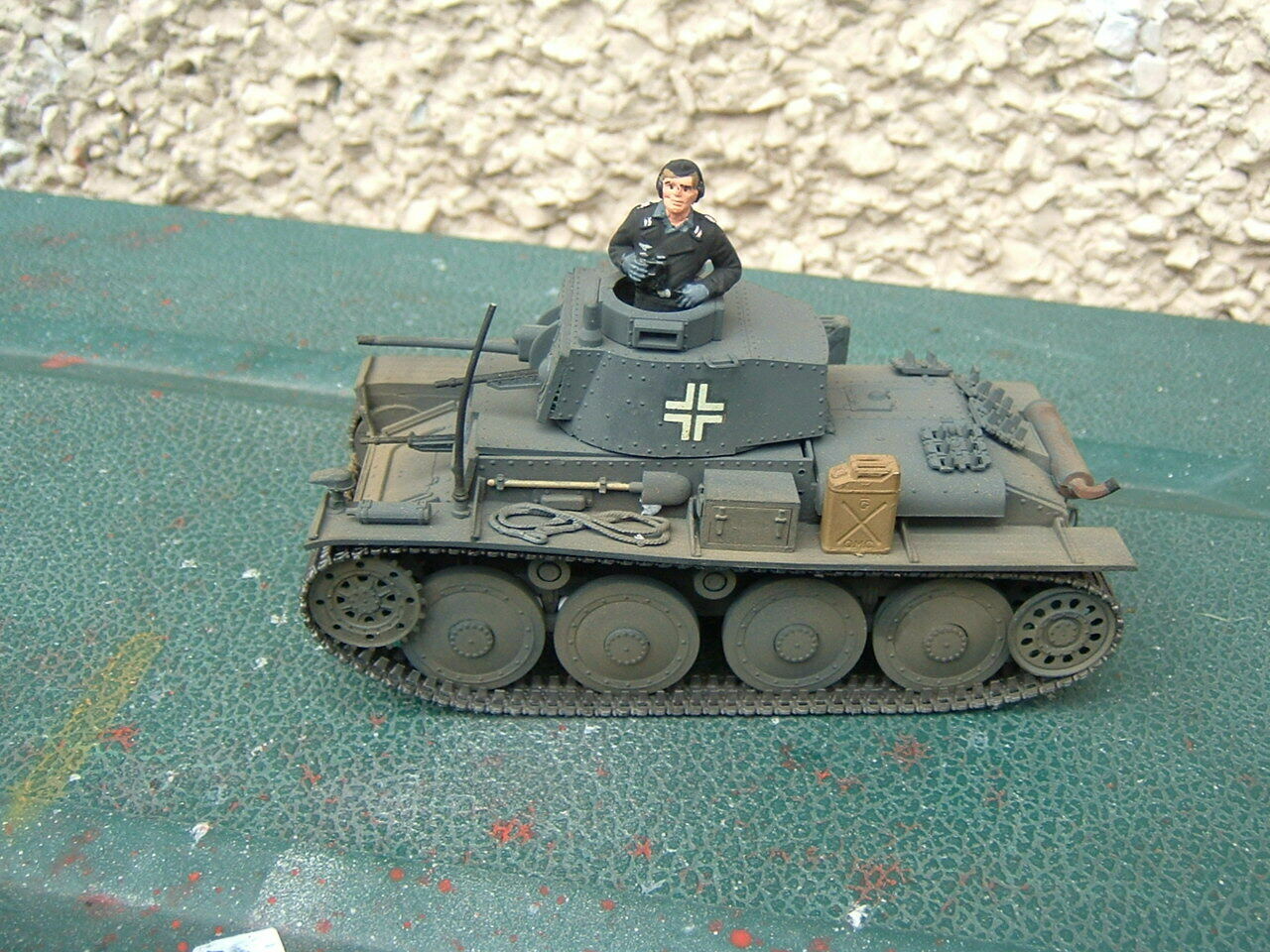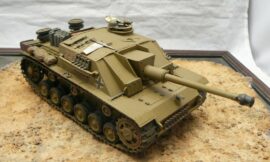The Panzer 38(t) was a Czechoslovakian-designed light tank that was adopted and extensively used by Nazi Germany during World War II. Originally known as the LT vz. 38, it became one of the mainstay tanks of the German Wehrmacht in the early years of the war. Its reliability, ease of production, and versatility made it a significant asset during the early blitzkrieg campaigns.
Development and Specifications
Origin and Design
The Panzer 38(t) was developed by the Czechoslovakian company ČKD (Českomoravská Kolben-Daněk) in the late 1930s. The “t” in its designation stands for “tschechisch,” the German word for “Czech.” Following the German occupation of Czechoslovakia in 1938-1939, the tank was incorporated into the German military.
- Armament: The primary weapon of the Panzer 38(t) was a 37 mm KwK 38(t) L/47.8 gun, which was capable of engaging most early war tanks. It was supplemented by two 7.92 mm MG 37(t) machine guns, one mounted coaxially with the main gun and the other in the hull.
- Armor: The tank’s armor ranged from 10 mm to 25 mm, providing reasonable protection against small arms fire and light anti-tank weapons.
- Engine: It was powered by a Praga EPA engine, producing 125 horsepower, which allowed the tank to reach speeds of up to 42 km/h (26 mph) on roads and around 15-20 km/h (9-12 mph) cross-country.
- Crew: The Panzer 38(t) had a crew of four: commander, gunner, loader, and driver.
Operational History
Early War Success
The Panzer 38(t) was prominently used during the invasions of Poland (1939) and France (1940), where its reliability and mobility proved advantageous. It outperformed many contemporary light tanks and was respected for its ease of maintenance and mechanical reliability.
Eastern Front
During Operation Barbarossa, the invasion of the Soviet Union in 1941, the Panzer 38(t) encountered more heavily armored Soviet tanks like the T-34 and KV-1. While it initially performed well against lighter Soviet armor, it soon became apparent that the Panzer 38(t) was outclassed by these newer designs. Despite this, it continued to see use due to its availability and the ongoing demand for armored vehicles.
Variants and Adaptations
One of the key strengths of the Panzer 38(t) was its adaptable chassis, which was used as the basis for several other armored vehicles:
Marder III
The Marder III was a series of German tank destroyers based on the Panzer 38(t) chassis. They were equipped with captured Soviet 76.2 mm guns or German 75 mm Pak 40 anti-tank guns, significantly enhancing their firepower against armored targets.
Jagdpanzer 38(t) Hetzer
The Jagdpanzer 38(t) Hetzer was a more heavily armored and lower-profile tank destroyer, armed with a 75 mm Pak 39 L/48 gun. It was highly effective due to its sloped armor, which provided good protection despite its relatively light weight.
Other Variants
The Panzer 38(t) chassis was also used for various other roles, including anti-aircraft vehicles (like the Flakpanzer 38(t)), reconnaissance vehicles, and artillery observation posts. Its versatility and robust design made it a valuable platform for a wide range of military applications.
Legacy
The Panzer 38(t) played a critical role in the early successes of the German military during World War II. While it was eventually surpassed by more advanced tank designs, its contributions during the early stages of the war and its versatility in later roles highlight its significance in armored warfare. The adaptations of its chassis into other roles underscore the ingenuity of German military engineering and the importance of adaptable, multi-purpose platforms in modern warfare.
Conclusion
In summary, the Panzer 38(t) was a highly successful and versatile light tank that served the German Wehrmacht well in the early years of World War II. Its robust design, reliability, and adaptability ensured that it remained in use in various forms throughout the war. The Panzer 38(t) stands as a testament to the effectiveness of Czechoslovakian tank design and its significant impact on German armored warfare.










